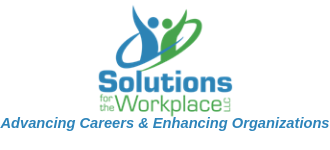Personality-driven career assessments can help you plot your next career move, but exercise caution with them and don’t take anything at face value: they’re merely assistive tools, not prescriptive ones.
Here are some additional personality-driven career assessments. You may want to consult with a certified career counselor for additional assistance.
Carolyn Kalil’s Personality Assessment (True Colors) is a personality system that is modeled as a graphical presentation of both Keirsey’s Temperament Sorter and the Meyers-Briggs Type Indicator. True Colors differentiates the four personality types as Gold, Blue, Green, and Orange.
This free assessment asks you to choose one of two ways to finish 36 statements. When finished, you will be provided with web-based results in terms of four colors, with one-paragraph descriptions of each. The results can help you define your skills and talents — and possibly direct you to various career paths.
DISC is a needs-motivated, observable behavioral profiling system which measures the energy put into approaching problems and challenges, influencing and coping with people, steadying and facing the environment, and complying and justifying rules and details. DISC measures our underlying emotions, needs, fears, and the primary concerns that drive behavior.
This assessment breaks down four core behavior styles, each represented by a letter:
- Dominance: The “D” style places emphasis on accomplishing results.
- Influence: The “I” style places emphasis on influencing or persuading others.
- Steadiness: The “S” style places emphasis on cooperation.
- Conscientiousness: The “C” style places emphasis on quality and accuracy.
This assessment contains 28 groups of four words or statements. Through self-selection, you choose words that are most like you and words that are least like you, and through those responses, the report reveals your behavioral style and communication preferences. Not only does it describe the real (natural) you, it also identifies your style and preferences as you display them according to your perception of the demands of your environment (your adapted style).
One of the most widely-used assessments by professionals in the career services industry, the DISC Career Management Report provides value to jobseekers who are starting their careers, returning to the workforce, or in transition and unsure about the best career path.
Research conducted by Gallup, Inc. revealed that people are more productive, perform better, and are more engaged when they identify their natural talents and develop them into strengths.
The assessment measures your “talent DNA” based on the order of 34 themes of talent, which are sorted into four domains:
- Strategic Thinking: How you absorb, think about, and analyze information and situations.
- Executing: How you make things happen.
- Influencing: How you influence others.
- Relationship Building: How you build and nurture strong relationships.
Your distinct combination of the 34 CliftonStrengths themes is your personal code — the pattern of talents that make you unique. In fact, Gallup’s research has proven that the odds are 1 in 33 million that someone shares the same “top five” combination of themes as you!
This online assessment, which takes about an hour to complete, asks you to choose from 177 paired statements the one that best describes you. When you complete the CliftonStrengths, you will receive a personalized report, resources, and tools.
Our final article will discuss interest, rather than personality-based assessments.
